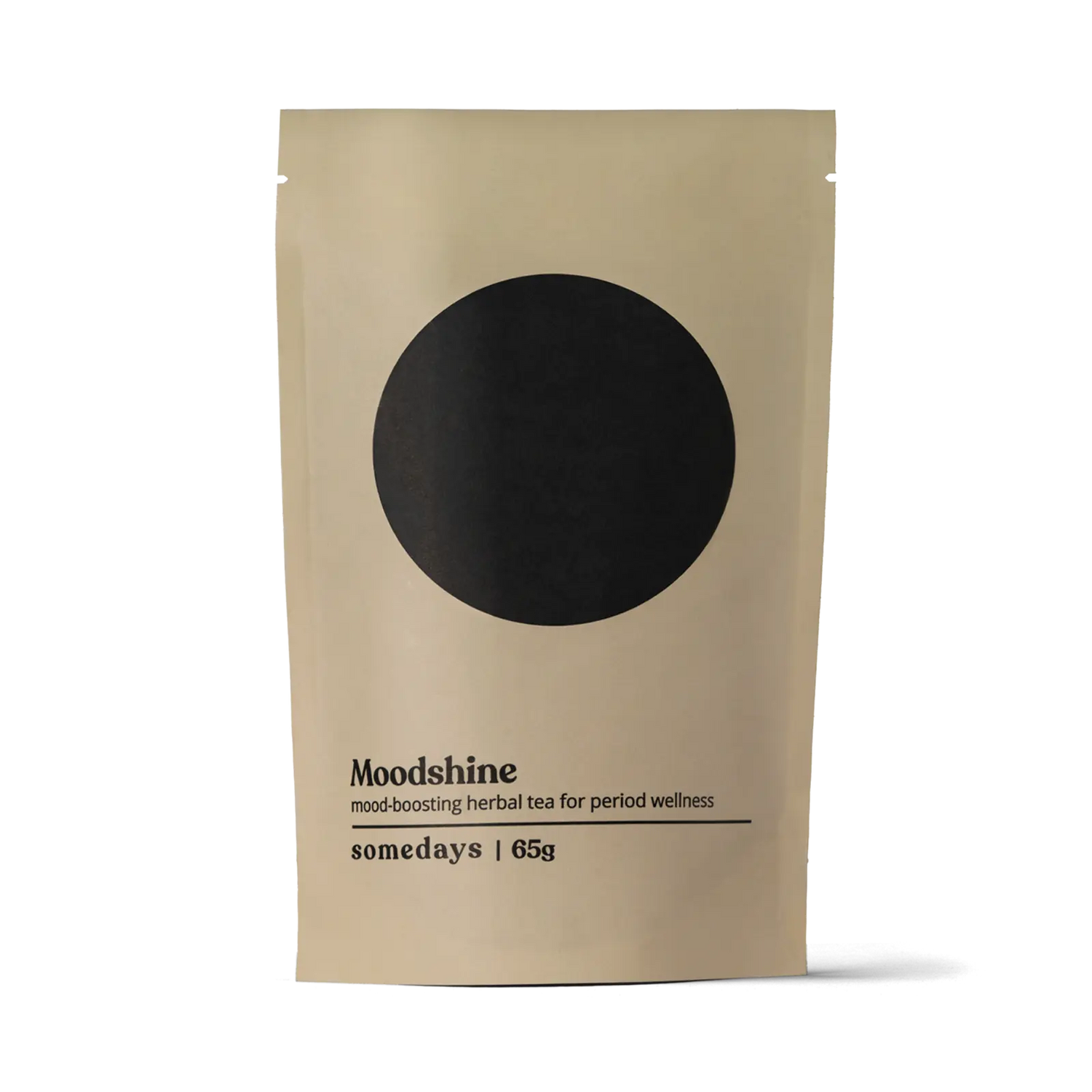Comprehensive Guide to Menstrual Disorders: Understanding What They Mean

Menstrual health is an essential aspect of overall well-being, yet it's often misunderstood or overlooked. For many, the monthly cycle is just another part of life, but for others, it’s a source of discomfort and confusion. Understanding menstrual disorders is crucial for recognizing when something isn’t quite right and seeking appropriate care.
What Are Menstrual Disorders?
Menstrual disorders encompass a range of conditions that affect the regularity, frequency, and intensity of menstruation. These conditions can significantly impact both physical and emotional health. Recognizing the different types of menstrual disorders and their symptoms is the first step toward maintaining good menstrual health.
| Condition | Symptoms | Challenges | Importance of Diagnosis and Symptom Management | Definition |
|---|---|---|---|---|
Primary Dysmenorrhea |
Nausea, vomiting, fatigue, abdominal pain, cramping, back pain | Severe pain impacting daily activities, potential absenteeism from work/school | Proper diagnosis helps differentiate from secondary causes, pain management improves daily functioning | Painful menstruation due to natural uterine contractions without an underlying condition |
Premenstrual Syndrome (PMS) |
Mood swings, tender breasts, food cravings, fatigue, irritability, depression | Emotional distress, physical discomfort, impact on interpersonal relationships | Accurate diagnosis aids in managing symptoms through lifestyle changes and medical interventions | A group of symptoms that occur in women typically between ovulation and a period |
Endometriosis |
Chronic pelvic pain, heavy menstrual bleeding, pain during intercourse, infertility, chronic fatigue | Significant impact on quality of life, work absenteeism, emotional distress | Early diagnosis can help manage symptoms, though there is no cure; treatment focuses on pain relief and fertility management | A disorder in which tissue similar to the lining inside the uterus grows outside the uterus and has been found on every major organ of the body |
Adenomyosis |
Heavy menstrual bleeding, pelvic pain, potential fertility issues | Severe pain and heavy bleeding impacting daily activities and quality of life | Proper diagnosis helps manage symptoms and improve quality of life, though treatment often provides only temporary relief | A condition where the inner lining of the uterus breaks through the muscle wall of the uterus |
PCOS (Polycystic Ovary Syndrome) |
Irregular periods, excessive hair growth, acne, obesity, infertility | Impact on fertility, chronic pain, emotional distress | Diagnosis is crucial for managing symptoms and reducing risks of long-term complications like diabetes and heart disease | A hormonal disorder causing enlarged ovaries with small cysts on the outer edges |
Fibroids |
Heavy menstrual bleeding, pelvic pain, frequent urination, constipation, infertility | Impact on daily activities, chronic pain, potential need for surgical intervention | Accurate diagnosis can guide treatment options, which may include medication or surgery to manage symptoms | Noncancerous growths in the uterus that can develop during a woman's childbearing years |
PMDD (Premenstrual Dysphoric Disorder) |
Severe mood swings, depression, irritability, anxiety | Emotional and psychological distress, significant impact on interpersonal relationships and daily functioning | Diagnosis is essential for effective management, which may include lifestyle changes and medical treatments to alleviate symptoms | A severe, sometimes disabling extension of premenstrual syndrome (PMS) |
Types of Menstrual Disorders
Primary Dysmenorrhea
Primary dysmenorrhea refers to painful periods that usually begin in adolescence and are not associated with any other medical condition. This pain is caused by the overproduction of prostaglandins, which cause the uterus to contract.
-
Symptoms:
Severe menstrual cramps, lower back pain, and sometimes nausea or vomiting, typically starting just before or at the onset of menstruation. -
Challenges:
Discomfort can interfere with daily activities, school, and work. The pain can be intense and debilitating, leading to missed days and reduced quality of life. -
Importance of Diagnosis:
While primary dysmenorrhea is common, it’s essential to rule out other conditions like endometriosis or fibroids that may cause similar pain. -
Symptom Management:
NSAIDs like ibuprofen can reduce pain. Heat therapy, such as using heating pads, or hot baths can help ease pain flare-ups. Regular massages and lymphatic drainage techniques like dry brushing can also be beneficial. Remember that finding a community to talk about and validate your pain is also a very underrated form of symptom management.
Premenstrual Syndrome (PMS)
PMS is a collection of physical and emotional symptoms that occur in the days leading up to menstruation.
-
Symptoms:
Bloating, mood swings, irritability, fatigue, breast tenderness, and headaches. Symptoms typically occur one to two weeks before menstruation and subside once the period starts. -
Challenges:
PMS can vary in intensity and may disrupt daily activities, relationships, and overall quality of life. -
Importance of Diagnosis:
Understanding that symptoms are related to PMS can help in managing them better and distinguishing them from other health issues. -
Symptom Management:
Regular movement, eating whole foods, reducing caffeine and salt intake, and stress management techniques can help manage symptoms. In some cases, hormonal treatments or antidepressants may be recommended.
PMDD is a more severe form of PMS, characterized by intense emotional symptoms such as depression, anxiety, and irritability.
-
Symptoms:
Severe mood swings, depression, anxiety, irritability, anger, and physical symptoms similar to PMS, but more intense. -
Challenges:
PMDD can severely impact mental health, relationships, and daily functioning. The emotional toll can be significant and may require medical intervention. -
Importance of Diagnosis:
Accurate diagnosis is crucial as PMDD is often misdiagnosed as other mood disorders. Proper diagnosis allows for appropriate treatment. -
Symptom Management:
Antidepressants and hormonal treatments are one way to go but there are also some natural stress reduction techniques to consider - like regular walks, meeting with friends, meditation, aromatherapy, warm baths, and even switching up your period products (if you experience severe cramping). These can all be beneficial for curbing symptoms of PMDD.
Endometriosis is a condition where tissue similar to the lining of the uterus grows outside the uterus, causing pain and often leading to fertility issues.
-
Symptoms:
Pelvic pain, painful periods, pain during intercourse, heavy menstrual bleeding, and in some cases, infertility. -
Challenges:
The pain associated with endometriosis can be severe and chronic, impacting daily life, work, and relationships. It can also lead to emotional distress and anxiety. -
Importance of Diagnosis:
Early diagnosis is crucial for managing symptoms and preventing complications such as infertility. Endometriosis is often misdiagnosed or diagnosed late, which can delay effective treatment. -
Symptom Management:
Treatment options include hormonal therapies, pain management with NSAIDs, and in severe cases, surgery. Incorporating anti-inflammatory foods can make a difference in symptom levels. Heating pads, hot baths, and topical pain management products, like Cramp Cream, can help ease endometriosis flare-ups (and the latter was created exactly for that reason!) Don’t underestimate the power of finding someone to talk to and validate your pain too.
Adenomyosis occurs when the uterine lining grows into the muscular wall of the uterus.
-
Symptoms:
Heavy menstrual bleeding, severe cramps, pelvic pain, and an enlarged uterus. Symptoms may worsen with age. -
Challenges:
Adenomyosis can be difficult to diagnose and is often mistaken for other conditions like fibroids. The pain and heavy bleeding can be debilitating. -
Importance of Diagnosis:
Accurate diagnosis is essential to manage the symptoms effectively and distinguish adenomyosis from similar conditions - which almost always happens post-hysterectomy. -
Symptom Management:
NSAIDs and hormonal therapies can help manage pain and bleeding. In severe cases, surgery, including hysterectomy, may be considered.
PCOS is a hormonal disorder that affects the ovaries, causing irregular periods, excess androgen levels, and the development of small cysts on the ovaries.
-
Symptoms:
Irregular periods, excessive hair growth (hirsutism), acne, weight gain, and infertility. PCOS is also associated with insulin resistance and an increased risk of type 2 diabetes. -
Challenges:
Managing symptoms can be challenging due to the broad range of symptoms and their impact on physical and emotional health. PCOS can also affect fertility. -
Importance of Diagnosis:
Early diagnosis is important for managing symptoms and reducing the risk of long-term complications such as diabetes and heart disease. -
Symptom Management:
Incorporating more whole foods like vegetables, fruits, lean proteins, and whole grains helps to stabilize blood sugar levels, which is crucial for managing PCOS. Medications may include hormonal contraceptives to regulate periods, anti-androgens to reduce hair growth, and metformin for insulin resistance.
Uterine fibroids are non-cancerous growths that develop in or on the uterus.
-
Symptoms:
Heavy menstrual bleeding, prolonged periods, pelvic pain, frequent urination, and in some cases, fertility problems. -
Challenges:
Fibroids can vary in size and number, causing a wide range of symptoms. Large fibroids can cause significant discomfort and complications. -
Importance of Diagnosis:
Early detection is important for managing symptoms and deciding on the appropriate treatment, which can range from medication to surgery. -
Symptom Management:
Treatment options include medications to regulate hormones, non-invasive procedures like uterine artery embolization, and surgical options such as myomectomy or hysterectomy.
Amenorrhea is the absence of menstruation, which can be primary or secondary.
-
Symptoms:
Absence of periods, which may be accompanied by other symptoms depending on the underlying cause, such as weight changes, hair loss, or acne. -
Challenges:
Amenorrhea can be a sign of an underlying health issue, such as hormonal imbalances or thyroid disorders. It can also impact fertility and bone health. -
Importance of Diagnosis:
Diagnosing the underlying cause of amenorrhea is crucial for treatment and to prevent long-term health issues such as osteoporosis. -
Symptom Management:
Treatment depends on the underlying cause and may include hormonal therapy, lifestyle changes, and addressing any associated health conditions.
Secondary dysmenorrhea refers to painful periods caused by an underlying reproductive condition such as endometriosis, adenomyosis, or fibroids.
-
Symptoms:
Severe menstrual cramps that worsen over time, pain that lasts longer than typical menstrual cramps, and pain during intercourse. -
Challenges:
Secondary dysmenorrhea can significantly impact daily life and may worsen without treatment. The pain is often more intense than in primary dysmenorrhea. -
Importance of Diagnosis:
Identifying the underlying cause is essential for effective treatment and to prevent complications. -
Symptom Management:
Treatment may include pain management - like heat therapy, topical pain relief, and massage as well as hormonal therapies, and addressing the underlying condition through medication or surgery.
Menorrhagia is characterized by abnormally heavy or prolonged menstrual bleeding.
-
Symptoms:
Periods lasting longer than seven days, extremely heavy bleeding requiring frequent pad or tampon changes, and sometimes anemia. -
Challenges:
Heavy bleeding can lead to anemia, fatigue, and other complications. It can also interfere with daily life and cause emotional distress. -
Importance of Diagnosis:
Early diagnosis is important to manage symptoms and prevent complications like anemia. It’s also essential to rule out other underlying conditions. -
Symptom Management:
Treatment options may include hormonal therapies, medications to reduce bleeding, and in some cases, surgical interventions.
-
Oligomenorrhea
Oligomenorrhea refers to infrequent menstrual periods, typically defined as having fewer than nine periods in a year or a cycle length greater than 35 days.
-
Symptoms:
Irregular or infrequent periods, which may be accompanied by other symptoms such as acne, hair growth, or weight changes if associated with conditions like PCOS. -
Challenges:
Oligomenorrhea can be a sign of an underlying health issue, and irregular periods can impact fertility. -
Importance of Diagnosis:
Diagnosing the cause of oligomenorrhea is crucial for managing symptoms and addressing any underlying conditions. -
Symptom Management:
Treatment may include hormonal therapy and addressing any related health conditions. Managing stress can also improve menstrual regularity.
Understanding the Impact of Menstrual Disorders
Menstrual disorders can significantly affect your quality of life, impacting your physical health, emotional well-being, and daily activities. Chronic pain, heavy bleeding, and emotional disturbances can interfere with work, school, and social life. Additionally, untreated menstrual disorders may lead to more serious health issues, such as anemia, infertility, or an increased risk of certain cancers.
Managing and Treating Menstrual Disorders
Treatment for menstrual disorders varies depending on the underlying cause and the specific symptoms. Here are some general approaches:
- Lifestyle Changes: Incorporating whole foods, reducing caffeine and sugar intake, regular movement, and stress management into your routine can help alleviate symptoms of menstrual disorders, although may not always be the answer. Because every body is different it’s best to make small changes and see what works best for you and your symptoms.
- Medications: Depending on the diagnosis, your healthcare provider may recommend hormonal contraceptives, nonsteroidal anti-inflammatory drugs (NSAIDs), or other medications to regulate your cycle or reduce pain and bleeding.
- Alternative Therapies: Acupuncture, yoga, and herbal supplements may provide relief for some individuals. It’s important to discuss these options with your healthcare provider before starting any new treatment.
- Surgical Options: In some cases, surgical intervention may be necessary, particularly for conditions like fibroids, endometriosis, or adenomyosis. Procedures range from minimally invasive surgeries to more extensive options, depending on the severity of the condition.
Product Recommendations for Menstrual Health
Managing menstrual disorders often requires medical intervention, but there are also products that can help you feel more comfortable and supported during your cycle. Here are a few suggestions:
- Heat Pad: A go-to for menstrual cramps, heat pads provide soothing relief. Look for options that are portable, so you can use them at home or on the go.
- Topical Pain Relief: Products with natural ingredients that help reduce inflammation and pain are ideal for those days when you’re experiencing the worst of your discomfort. Try Cramp Cream, Hot Spell, or Belly Jelly made with ingredients like arnica, magnesium and castor oil.
- Lymphatic Drainage: Lymphatic massages can improve the circulation of lymph fluid, reducing inflammation, and relieving muscle tension. For a more DIY approach with the same benefits, you can try dry brushing to help stimulate circulation and exfoliate the skin, which can reduce bloating and ease discomfort.
- Menstrual Cups: For people who experience heavy bleeding, menstrual cups will offer longer-lasting protection (up to 12 hours) and may reduce the risk of toxic shock syndrome (TSS).
- Period Underwear: These innovative products are designed to be worn alone or as backup protection, offering peace of mind during heavy flow days. If you are a tampon user and experience sever cramping, try switching your period products by taking a more “free-bleeding” approach.
Remember, while these products can help manage symptoms, they are not a substitute for professional medical advice and treatment.
When to Seek Medical Attention
If you’re experiencing symptoms of a menstrual disorder, it’s important to seek medical attention. Early diagnosis and treatment can help prevent complications and improve your quality of life. Don’t hesitate to reach out to a healthcare provider if you notice any changes in your menstrual cycle or experience discomfort that interferes with your daily life.
Understanding menstrual disorders is key to taking control of your menstrual health. By recognizing the symptoms and knowing when to seek help, you can manage your condition more effectively and maintain your overall well-being. Remember, you’re not alone in this journey, and there are resources and treatments available to help you feel your best every day of the month.
Think you may have endometriosis but haven’t been diagnosed? Take our free endometriosis assessment available HERE.
Join our Betterdays community - a weekly newsletter where we break down the latest (TLDR) news, research and breakthroughs related to your reproductive health—with a splash of humor to get you through the tough days.
Previous Article All Articles Next Article
All Articles


